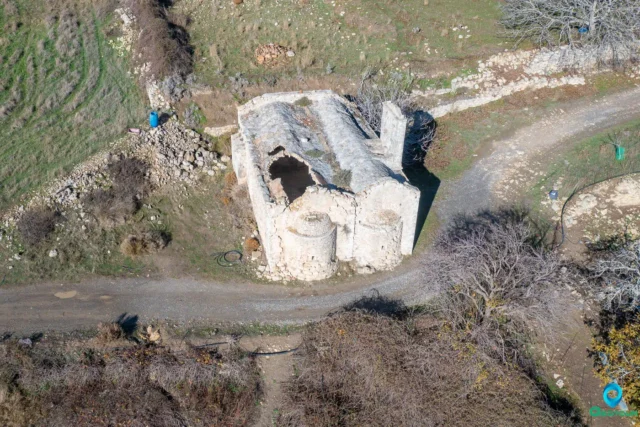



The Tholoi Fortress, also known as Tholos or Thólos, is situated west of Alagni village in Crete, Greece. This strategically positioned fortress, dating back to the 16th or 17th century, offers a panoramic view of the surrounding landscape, serving as a silent sentinel of Crete’s rich history.
Construction and Design
The Tholos Fortress is strategically positioned on a hilltop, offering a commanding view of the surrounding area. This strategic vantage point was characteristic of fortifications built during the Venetian and Ottoman periods, enabling both surveillance and defense. The fortress complex comprises three vaulted ground-floor compartments enclosed within a fortified perimeter. The initial structure rose two stories high.
Purpose and Function
The fortress’s primary functions were likely twofold:
- Surveillance: Its hilltop location provided an unparalleled vantage point for monitoring the surrounding area, including Alagni village.
Historical Timeline
-
Venetian Period (1204-1669): The fortress is believed to have been built during the Venetian period, possibly in the 16th or early 17th century. This was a time of frequent conflict between the Venetians and Ottomans, and fortifications like Tholoi played a crucial role in protecting Venetian territories.
-
Ottoman Period (1669-1898): After the Ottoman conquest of Crete, the fortress continued to be used, possibly as a watchtower or a local administrative center.
-
Late 19th Century: Towards the end of the 19th century, the fortress may have served as a Turkish “koules,” a type of small fort used to suppress the Cretan Revolution of 1866-1869.
Architectural Significance
The Tholoi Fortress is a remarkable example of vernacular architecture in Crete during the Venetian and Ottoman periods. Its design reflects the need for both functionality and Ottoman periods. Its design reflects the need for both functionality and defense.
The fortress’s design exhibits a blend of architectural styles, with features reminiscent of Venetian villas like the Trevizan Villa in Kissamos and the Ethia Villa in Sitia. This suggests the possibility of it being a Venetian mansion.
The use of local materials, such as stone and mortar, and the integration of the fortress into the natural landscape are characteristic of fortifications in the region.
Current Status
The Tholoi Fortress is currently in ruins. Parts of the structure are damaged but still show signs of its original size and design. The fortress experienced additional damage during the September 2021 earthquake in Arkalochori.
The one-story outer wall is mostly intact, showing how the fortress was defended. The fortress is open to the public but be careful because the walls are damaged. To reach the Tholoi fortress, you will walk through a privately-owned field with sheep and goats. It is fenced but open to the public. Please close the gate after you enter to prevent the animals from leaving.
Tholoi and the Church of Agioi Apostoloi
Near the fortress, at the foot of the hill, is the Church of Agioi Apostoloi (Holy Apostles), a 15th or 16th-century structure bearing the coat of arms of the Corner family (Cornaros in Greek), a prominent Venetian family.
The Corner family crest and the inscription of the year 1614 suggest a possible connection between the church and the fortress, perhaps serving as a spiritual center for those within or near the fortress.
Fortifications: Key Points
- Construction Period: Venetian period, possibly 16th or early 17th century.
- Location: Near the village of Alagni.
- Dimensions: The fortified perimeter is 15 meters by 9 meters.
- Historical Significance: The fortress played a role in the Venetian-Ottoman conflicts, possibly serving as a Turkish “koules” during the Cretan Revolution of 1866-1869.
- Current Status: The fortress is in ruins, with some parts still standing but in a deteriorated condition.
References
-
Archaeological Bulletin (Athens, Greece) (1999). Archaeological Bulletin of the Ministry of Religions and National Education, Volume 54, B2
-
Gigourtakis, N. M. (2004). Byzantine fortifications in Crete during the 2nd Byzantine period (961-1204). Rethymno. (Βυζαντινές οχυρώσεις στην Κρήτη κατά τη Β΄ βυζαντινή περίοδο (961-1204). Ρέθυμνο.)
-
Asimaki, E. (2014). Network of Ottoman Fortifications in the 19th century. Technical University of Crete. (Δίκτυο Οθωμανικών Οχυρώσεων τον 19ο αιώνα. Πολυτεχνείο Κρήτης.)



































There are no comments yet.